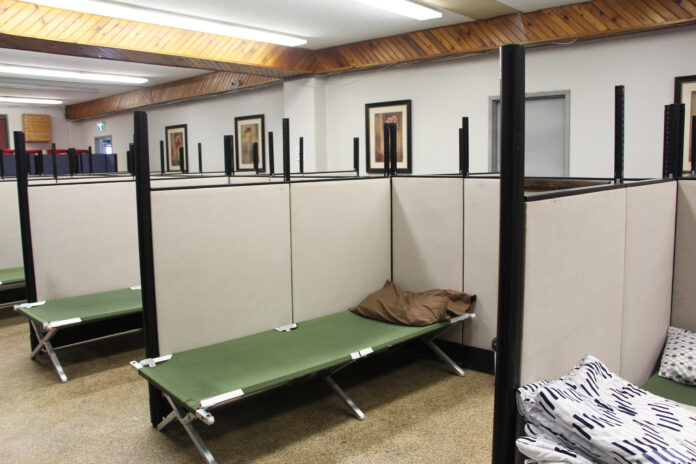Frontline organizations in Prince Albert are hoping to get a better sense of how many homeless individuals they’re serving this year.
The city is one of many across Canada hoping to conduct a Point in Time (PIT) count, which estimates the number of homeless people in a given area on a single night. Not intended as an exact number of homeless individuals, the count serves as a baseline that can be used to develop programs and apply for funding.
The federal government, which funds several housing and shelter initiatives through its Reaching Home program, is asking each community to complete a count in the next few months.
But Brian Howell of River Bank Development Corporation says such a task is challenging in the best of times, and the pandemic is only making it harder.
“We’re planning to do one, depending on how things unfold with COVID,” he said.
“Any activity that requires conversation and meeting is a bit challenging these days.”
Howell explained that in Prince Albert, teams go out into the community to survey people they encounter about their housing situation. They approach people in emergency shelters, transitional housing or shelter-type facilities, as well as those sleeping on the street.
That includes anyone using the Stepping Stone emergency shelter, the PAGC Shelter, Our House or the YWCA Central Avenue shelter, any shelters for women and the social detox centre run by the SHA.
“You count the two together and you come up with a sheltered and unsheltered homelessness number for your community,” Howell said.
“They’re an attempt to enumerate homelessness in your community on one particular night.”
Prince Albert has done three PIT counts since 2017 — two funded and one unfunded. This will be the third official count used by the federal government for its statistical and funding purposes.
“It’s a good baseline,” Howell said.
“If you do two or three of them, you can sort of see homelessness trends within your community. They’re not a definitive count of every homeless person in the community.”
That’s because he explained, it wouldn’t capture anyone couch surfing, or staying temporarily in an apartment building, or anyone teams don’t run into on a particular night.
“Homelessness is difficult to measure,” Howell said.
Whatever happens, Howell said River Bank, YWCA and other agencies that work with the homeless in Prince Albert hope to do a count of some kind, even if they can’t conduct a PIT.
In the meantime, the city continues to offer expanded programming for homeless and street-involved individuals this year, using additional COVID-funds. That has included expanding the emergency shelter capacity, bringing in a day program and hiring additional housing support workers.
“With COVID, homeless people are struggling,” he said. Places they would stay, such as business vestibules, restaurants or family and friends have closed their doors in an attempt to stop the spread of the virus. It’s created a lot more need for front-line supports.
“We’re hoping that a lot of these connections would be helpful to us doing a good PIT count.”
In a press release early this week, the federal Ministry of Families, Children and Social Development announced the launch of Everyone Counts 2021, a nationally-coordinated PIT count of homelessness in communities across Canada in March and April. All communities were invited to participate.
“PIT Counts contribute to developing a picture of homelessness at the community and national levels,” the government said in a press release.
They … include a survey capturing demographic details like age, gender, racial or Indigenous identity, and veteran status. Counts help communities better identify the needs of people experiencing homelessness and better coordinate and deliver local, tailored supports.”
Preliminary results of the counts will be available mid-fall, but a more complete picture isn’t expected until next spring. The data will be used to inform future policies and programs.
“Every Canadian deserves a safe and affordable place to call home,” said minister Ahmed Hussen. “ This year, the Point-in-Time Counts will give us insight into how the COVID-19 pandemic has impacted homelessness in communities. They will allow us to find solutions that meet the needs and experiences of the homeless population, as we continue our work to end chronic homelessness across the country.”


